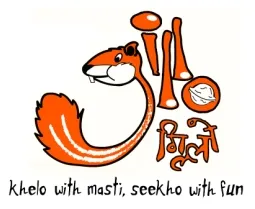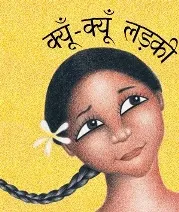Gillo Gilehri - The Squirrel that Teaches! Mumbai based Theatre Group for Children

Introducing a squirrel named GILLO. That's Gillo Gilehri for those who don't know him at all. He is the mascot for an independent children's media group named after Shaili Sathyu from Mumbai.This group has been started with the aim of producing material and organizing activities that help children, parents and teachers make childhood and learning fun and enriching. (Phew! That's a big responsibility!) Learning that has a focus on knowledge, but with particular emphasis on identity, values and of course - fun.
In conversation with founder, Shaili Sathyu, Abhilasha Dafria for YourStory, finds out how this squirrel helps her provide stimulation for children to develop an interest and to generate curiosity about the world around them!
Shaili Sathyu was one of the Finalist at the British Council Young Creative Entreprenuer Award for Performing Arts 2011. To know more about the Young Creative Entrepreneur Awards, click here. Follow Young Creative Entrepreneur Awards (YCE) on Facebook
Please introduce Gillo Gilheri to our readers.
GILLO is an independent organisation that is dedicated to children and young people. Its work spans projects in Education, the Arts and the Media. The focus of our work is indigenous content within an Indian context.
What triggered this idea?
I have a background in architecture and then education and theater. So far it has been a journey of exploration. About 10 years back I had this dream of writing stories for children and starting a publishing house. Over the years the dream became bigger and I wanted to have a company that did a variety of work for children – ranging from publishing, theater, activities, movies, creative workshops and much more.
I chose the Indian Palm Squirrel as the mascot and the logo was designed based on it. This squirrel is found acrossIndiafrom the coast to the plains and to the foothills in the north. In the same way we dream of reaching our work and engaging with children acrossIndia, making Gillo one of their friends through childhood.
Could you tell us in detail what programs one may witness as your audience?
Currently our Theatre Wing is very active and we regularly stage plays for children as well as hold theatre-based workshops for children and teachers.
We have 2 full length plays for children between 5 and 12 years. Both plays are in Hindi.
“Suar chala space ko” and "Kyun-Kyun Ladki" (Why-Why Girl)

Besides, we also have the Saturday Drama Club, where they come twice a month and explore creative drama and theatre arts with our team of theatre practitioners, including actors, musicians, singers, designers and writers.
Where did this concept emerge from?
The seed of this group emerged from the fact that we inIndiaare not creating enough local content for children. Be it literature or art or toys or things to do as a child – our children don’t have that many options that our based in our contemporary context. We are trying to create alternatives for children and their parents, as well as for teachers and schools.
Where do you have your main auditorium? And where are you located?
We are based in Mumbai. We don’t have our own performance space. We rehearse and do theatre research atAksharaHigh Schoolin Mumbai. Every year we perform at Prithvi Theatre in Mumbai and at Ranga Shankara inBangalore. We also visit Pune once a year and stage shows for schools and general public. In 2012 we hope to visit more places across India.
Do you have international tie-ups?
We don’t have any international tie-ups. As the Artistic Director at Gillo, I recently visitedLondonfor a shadowing placement at the Unicorn Theatre. It was an enriching experience to see their work and to interact with their team. As a member of ASSITEJ we are currently working towards international tie-ups, but the actual projects would not be in public till 2013.
Since when are you operational? How big is your team?
We have been in operation since end 2009. Our core team has 7 people and the theatre wing has 21 people.
How is the training of your members taken care of?
The theatre wing works through the year about 2 to 3 days a week. We conduct regular workshop sessions for our performers. Last year we had a variety of experts from the field of education, theatre and media come and conduct sessions for our team. Apart from this I myself conduct weekend workshop sessions through the year where we explore various forms of theatre, literature, music, visual art, etc. In 2012 we are seeking to organise residential workshops for our actors and singers.
Could you take us back to your first performance?
Our first performance was a short skit titled ‘Laalchi Bachiya Gulabo’. It was staged at a school mela in Mumbai. We also staged some short mime performances at this mela. These short performances were great fun and it was very exciting to finally be out there in the middle of the public! Gillo was now alive and kicking. That is what I remember most.
What were the challenges you faced while starting up? Tell me about your initial hurdles.
The biggest challenge has been to put together a team of like-minded people who can dream together.
The second challenge has been to get funding. This is still a huge concern as we are still developing our financial module.
So did you fund-raise to start up? Are you looking at getting funded now?
Some of us put in our personal savings to start the company. Now we have taken the risk and delivered work that has been consistent and appreciated across the spectrum by children and adults. Now we are looking at getting institutional funding for projects and research; individual donations and corporate support.
How does your revenue model work?
We have been generating revenue from ticket sales, show sales, workshop fees and corporate sponsorships. It is a difficult to meet expenses just from ticket sales and we have to keep thinking of ways to offset our overheads and expenses towards logistics through support from individuals and organisations.
How do you market yourself?
We put out advertisements in newspapers; poster displays at schools, bookshops, cultural centres, children’s libraries, etc; e-fliers; Facebook; Twitter; handbills distributed at various places in the vicinity of the auditoriums we perform at and so on. Coverage in the print media is very helpful in spreading the word among parents and teachers. So we do try and get previews in newspapers and magazines a week before our shows.
Are there other players in the market doing similar things? Can you name them?
There are a few groups in Mumbai who are creating plays for children, including Akvarious, Yatri, Ranga Theatre, Tram Theatre, Kalaghar and others in Mumbai. AcrossIndiathere are other groups including Little Theatre (Chennai), Kat Katha (New Delhi), Asakta (Pune), Anant (Delhi), Khilona (Delhi), Maharashtra Cultural Centre (Pune), Ranga Shankara (Bangalore), Rafiki (Bangalore) and many more.
But in Mumbai we are the only group exclusively working in Theatre for Young Audiences (TYA).
How do you see the theatre industry in India emerge five years from now? Any tips for budding creative entrepreneurs?
The current generation of theatre practitioners are looking at doing theatre professionally, as compared to previous generations. I am talking from an urban perspective. Today there are opportunities in the theatre ‘industry’ but few and far between. The important thing is to follow your creative dream and manage it with a professional approach. Today arts management is becoming an important area in the arts sector and this will definitely change the face of theatre as we know it today. All I can say to creative entrepreneurs is – dare to dream!
For more information please check out Gillo Gilheri and share your thoughts by dropping a comment below!
- Abhilasha Dafria







